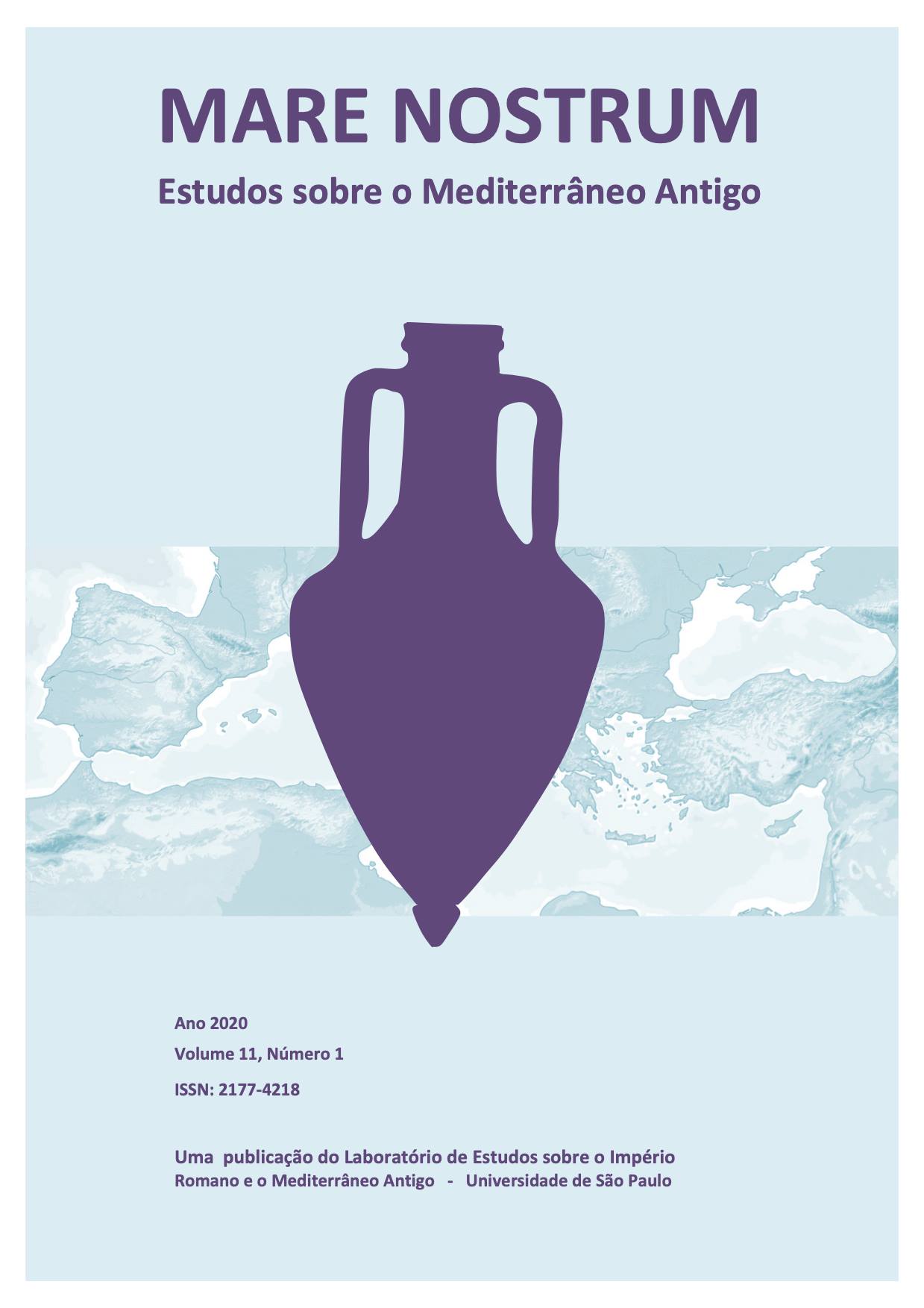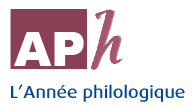Can a god give birth? msj in the Religious Hymns of the Egyptian New Kingdom (c. 1539-1077 BC): readdressing the so-called “androgyny” of the Creator deity
DOI:
https://doi.org/10.11606/issn.2177-4218.v11i1p61-103Keywords:
Religious Hymns, New Kingdom, Creator deity, Androgyny, MsjAbstract
The Egyptian creator deity, mainly male, has been understood as an
androgynous entity due, among other factors, to his performance of msjactions,
usually associated to the female scope. The present paper deals with
the different attestations of msj in the religious hymns of the New Kingdom
(c. 1539-1077 BC). It is structured into two main axis: on the one hand, it will
be noted that msj does not always refer to a biological/reproductive act; on the other hand, it will be argued that the Demiurge’s (pro)creative ability does not necessarily place him into the non-binary gender spectrum. Particular attention will be paid to the classifiers’ distribution in the different writings of the word but also to their respective phraseological contexts in selected sources from this corpus. The key goal is to achieve a more nuanced understanding of this term and, consequently, ponder on the pertinence of the label “androgynous” in reference to the creator deity as a whole.
Downloads
References
Allen, J. P. (2015). The Ancient Egyptian Pyramid Texts. SBL Press.
Assmann, J. (1983). Sonnenhymnen in Thebanischen Gräbern. Mainz am Rhein: Verlag Philipp von Zabern, [= STG].
Assmann, J. (1999). Ägyptische Hymnen und Gebete: Übersetzt, kommentiert und eingeleitet. Freiburg, Göttingen: Universitätsverlag, Vandenhoeck & Ruprecht [=ÄHG].
Assmann, J. (2004). Theological Responses to Amarna. In Knoppers, G.N. & Hirsch, A. (eds.), Egypt, Israel, and the Ancient Mediterranean World. Studies in Honor of Donald B. Redford. Brill, 179–191.
Assmann, J. (2015). Nommer l’Un Dans La Théologie Égyptienne. Revue Des Sciences Religieuses, 89 (2), 137–63.
Audouit, C. & Thuault, S. (2018-2019). Écrire La Femme En Égypte Ancienne, 19-20–21, 11–42.
Baines, J. (2011). Presenting and Discussing Deities in New Kingdom and Third Intermediate Period Egypt. In Pongratiz-Leisten, B. (ed.), Reconsidering the Concept of Revolutionary Monotheism (pp. 41–89). Eisenbrauns.
Baines, J. (1996). Classicism and Modernism in the Literature of the New Kingdom. In Loprieno A. (ed.), Ancient Egypt Literature – History and Forms (pp. 157–174). Brill.
Baines, J. (2000). Egyptian Deities in Context: Multiplicity, Unity, and the Problem of Change. In Porter, B. N. (ed.). One God or Many? Concepts of Divinity in the Ancient World (pp. 9–78). Casco Bay Assyriological Institute.
Barucq, A. & Daumas, F. (1980). Hymnes et prières de l’Égypte ancienne. Cerf [=HPEA].
Bickel, S. (1998). Changes in the Image of the Creator God during the Middle and New Kingdoms. In Eyre, C. (ed.). Proceedings of the Seventh International Congress of Egyptologists, Cambridge, 3-9 September 1995 (pp. 165–172). Uitgeverij Peeters.
Breasted, J. H. (1934). The dawn of conscience. C. Scribner’s sons.
Budge, E. A. W. (1913). The Papyrus of Ani. A Reproduction in facsimile edited, with hieroglyphic transcript, translation and introduction. Philip Lee Warner & G.P. Putnam’s Sons.
Butler, J. (1990). Gender Trouble: Feminism and the Subversion of Identity. Routledge.
Dicionário Infopédia da Língua Portuguesa [em linha]. Porto: Porto Editora, 2003-2020. Recuperado em 28 de jan., 2020. https://www.infopedia.pt/dicionarios/lingua-portuguesa/androginia
Edwards, I. S. (1939). Hieroglyphic Texts from Egyptian Stelae etc. VIII. Harrison and Sons.
Erman, A & Grapow, H. (1925-1963). Wörterbuch der aegyptischen Sprache. J.C. Hinrich’sche Buchhandlung [= Wb].
Erman, A. (1923). Die Literatur der Aegypter: Gedichte, Erzählungen und Lehrbücher aus dem 3. und 2. Jahrtausend v.Chr. J.C. Hinrichs.
Faulkner, R. O & Andrews, C. (1985) The Ancient Egyptian Book of the Dead. British Museum Press.
Faulkner, R. O. (1933). The Papyrus Bremner-Rhind. Édition de la Fondation Égyptologique Reine Élisabeth.
Faulkner, R. O. (2007). The Ancient Egyptian Coffin Texts. Warminster, Aris & Phillips.
Foster, J. (1995). Hymns, Prayers, and Songs. An Anthology of Ancient Egyptian Lyric Poetry. Scholars Press.
Gardiner, A. (1905). Hymns to Amon from a Leiden Papyrus. Zeitschrift fur Ägyptische Sprache und Alterthumskunde 42, 12–42.
Hassan, F. (1998). The Earliest Goddesses of Egypt. Divine Mothers and Cosmic Bodies. In: Goodison, L. & Morris, C. (eds.). Ancient Goddesses. The Myths and the Evidence (pp.98–112). British Museum Press.
Hoffmeier, J.K. (2015). Akhenaten and the Origins of Monotheism. Oxford Scholarship Online.
Hornung, E., Krauss, R. & Warburton, D. A. (eds.) (2006). Ancient Egyptian Chronology. Brill.
Hornung, E. (1973). Der Eine und die Vielen: ägyptische Gottesvorstellungen. Darmstadt: Wissenschaftliche Buchgesellschaft.
Jorgensen, M. (1998). Catalogue: Egypt II (1550-1080 B.C.): Ny Carlsberg Glyptotek. Copenhagen. Ny Carlsberg Glyptotek.
Kaplony, P. (1966). Die Handwerker als Kulturträger Altägypten. Asiatische Studien, 20 (1–4), 101–125.
Knigge, C. (2006). Das Lob der Schöpfung: die Entwicklung ägyptischer Sonnen- und Schöpfungshymnen nach dem Neuen Reich. Academic Press, Vandenhoeck & Ruprecht.
Koefoed-Petersen, O. (1951). Egyptian sculpture in the Ny Carlsberg Glypothek. Lunos Bogtr.
Lange, H. O. (1927). Der Magische Papyrus Harris. A. F. Høst & søn.
Leitz, C. (1999). Magical and Medical Papyri of the New Kingdom. British Museum Press.
Lichtheim, M. (2006). Ancient Egyptian Literature. Volume II: The New Kingdom. University of California Press.
Martin, G. T. (1989). The Memphite Tomb of Horemheb Commander-in-Chief of Tutankhamun. I – The Reliefs, Inscriptions, and Commentary. Egypt Exploration Society.
Mogensen, M. (1913). A Stele of the XVIIIth or XIXth Dynasty, with a Hymn to Ptah and Sekhmet. Proceedings of the Society of Biblical Archaeology, 15, 37–40.
Mogensen, M. (1930). La collection égyptienne. Lewis & Munksgaard.
Murnane, W. J. (1995). Texts from the Amarna Period in Egypt. Scholars Press.
Onstine, S. (2010). Gender and Religion of Ancient Egypt. Religion Compass 4 (1), 1–11.
Orriols-Llonch, M. (2012). Sex and Cosmogony. The Onanism of the Solar Demiurg. Göttinger Miszellen 233, 31–42.
Oswalt, J. N. (1968). The Concept of Amon-Re as Reflected in the Hymns and Prayers of the Ramesside Period. [Tese de Doutoramento, Brandeis University], Waltham.
Posener, G. (1972). Catalogue des ostraca hiératiques littéraires de Deir el Médineh II/3 – Nos 1109–1167, DFFIAO 18 (3). IFAO.
Roeder, G. (1924). Aegyptische Inschriften aus den Staatlichen Museen zu Berlin. Zweiter Band – Inschriften des Neuen Reichs. J.C. Hinrichs.
Roeder, G. (1959-1961). Die ägyptische Religion in Texten und Bildern. Artemis-Verlag.
Roth, A. M. (2000). Father Earth, Mother Sky: Ancient Egyptian Beliefs About Conception and Fertility. In: Rautman, A. E. (ed.). Reading the Body: Representations and Remains in the Archaeological Record (pp. 187–201). University of Pennsylvania Press.
Sainte Fare Garnot, J. (1949). Notes on the Inscriptions of Suty and Hor (British Museum Stela No. 826). Journal of Egyptian Archaeology 35, 63–68.
Sauneron, S. (1961). Remarques de philologie et d’étymologie (en marge des textes d’Esna). Mélanges Mariette. Institut Français dArchéologie Orientale, 229–251.
Scharff, A. (1922). Ägyptische Sonnelieder. Verlag Karl Curtius.
Sethe, K. (1909). Urkunden der 18. Dynastie Band 4. Historische-biographische Urkunden. J.C. Hinrichs [= Urk IV].
Stewart, H. M. (1966). Traditional Sun Hymns of the New Kingdom. Bulletin of the Institute of Archaeology, 6, 29–74.
Stewart, H.M. (1971). A Crossword Hymn to Mut. Journal of Egyptian Archaeology, 57, 87–104.
Sweeney, D. (2011). Sex and Gender. In: Frood, E. & Wendrich, W. (eds.). UCLA Encyclopedia of Egyptology. UCLA, Los Angeles, [Disponível em http://digital2.library.ucla.edu/viewItem.do?ark=21198/zz0027fc04, consultado a 22.01.2020]
Teeter, E. (2012), Change and Continuity in Religion and Religious Practices in Ramesside Egypt. In: Cline, E.H. & O’Connor, D. (eds.), Ramesses III. The Life and Times of Egypt’s Last Hero (pp. 27–66). The University of Michigan Press.
Topmann, D. Strukturen und Transformationen des Wortschatzes der ägyptischen Sprache. Berlin Brandenburgische, Akademie der Wissenschaften. In Thesaurus Linguae Aegyptiae [Disponível em http://aaew2.bbaw.de/tla/index.html; consultado a 24.01.2020].
Troy, L. (1986). Patterns of Queenship in Ancient Egyptian Myth and History. Uppsala University.
Troy, L. (1997). Mut enthroned. In Van Dijk, J. (ed.). Essays on ancient Egypt in honour of Herman te Velde (pp. 301–315). Styx.
Varille, A. (1941). L’hymne au soleil des architectes d’Aménophis III Souti et Hor. Bulletin de l’Institut d’Archéologie Orientale, 41, 25–30.
Vernus, P. (2011). Les Jachères Du Démiurge et La Souveraineté Du Pharaon: Sur Le Concept D’empire. Révue d’Égyptologie, 62, 175–97.
Vernus, P. (2016). L’écrit et La Canonicité Dans La Civilisation Pharaonique. In Ryholt, K. & Barjamovic, G. (eds.). Problems of Canonicity and Identity Formation in Ancient Egypt and Mesopotamia (pp. 271–347). Museum Tusculanun.
Vernus, P. & Yoyotte, J. (2005). Bestiaire des pharaons. A. Viénot, Perrin.
Wilson, J. A. (1950). Egyptian Hymns and Prayers. In Breasted, J. & Pritchard, B. (eds.) Ancient Near Eastern Texts relating to the Old Testament (pp. 365–381). Princeton University Press.
Zandee, J. (1947). De Hymnen Aan Amon van Papyrus Leiden I 350. Vol. Bijlage I - Hieroglyphische Tekst. Uitgegeven Door en Verkrijgbaar bij het Rijksmuseum van Oudheden te Leiden.
Zandee, J. (1964). Hymnical Sayings, addressed to the sun-god by the high-priest of Amun Nebwenenef, from his tomb in Thebes. Jaarbericht van het Vooraziatisch-Egyptische Genootschap “Ex Orient Lux”, 18, 253–265.
Zandee, J. (1992a). The Birth-Giving Creator-God in Ancient Egypt. In Llyod, A. B. (ed.). Studies in Pharaonic Religion and Society in Honour of J. Gwyn Griffiths. Egypt Exploration Society, 169–185.
Zandee, J. (1992b). Der Amunhymnus des Papyrus Leiden I 344, verso. Rjksmuseum van Oudheden.
Downloads
Published
Issue
Section
License
Copyright (c) 2020 Guilherme Borges Pires

This work is licensed under a Creative Commons Attribution 4.0 International License.
Responsibility for the content published by Mare Nostrum rests exclusively with the author(s) of such content.
The reproduction of the texts published by Mare Nostrum is licensed according to Creative Commons license Attribution-NonCommercial 4.0 International (CC BY-NC).
Authors who publish with this journal agree to the following terms:
- Authors retain copyright and grant the journal right of first publication with the work simultaneously licensed under a Creative Commons Attribution License that allows others to share the work with an acknowledgement of the work's authorship and initial publication in this journal.
- Authors are able to enter into separate, additional contractual arrangements for the non-exclusive distribution of the journal's published version of the work (e.g., post it to an institutional repository or publish it in a book), with an acknowledgement of its initial publication in this journal.
- Authors are permitted and encouraged to post their work online (e.g., in institutional repositories or on their website) prior to and during the submission process, as it can lead to productive exchanges, as well as earlier and greater citation of published work (See The Effect of Open Access).









